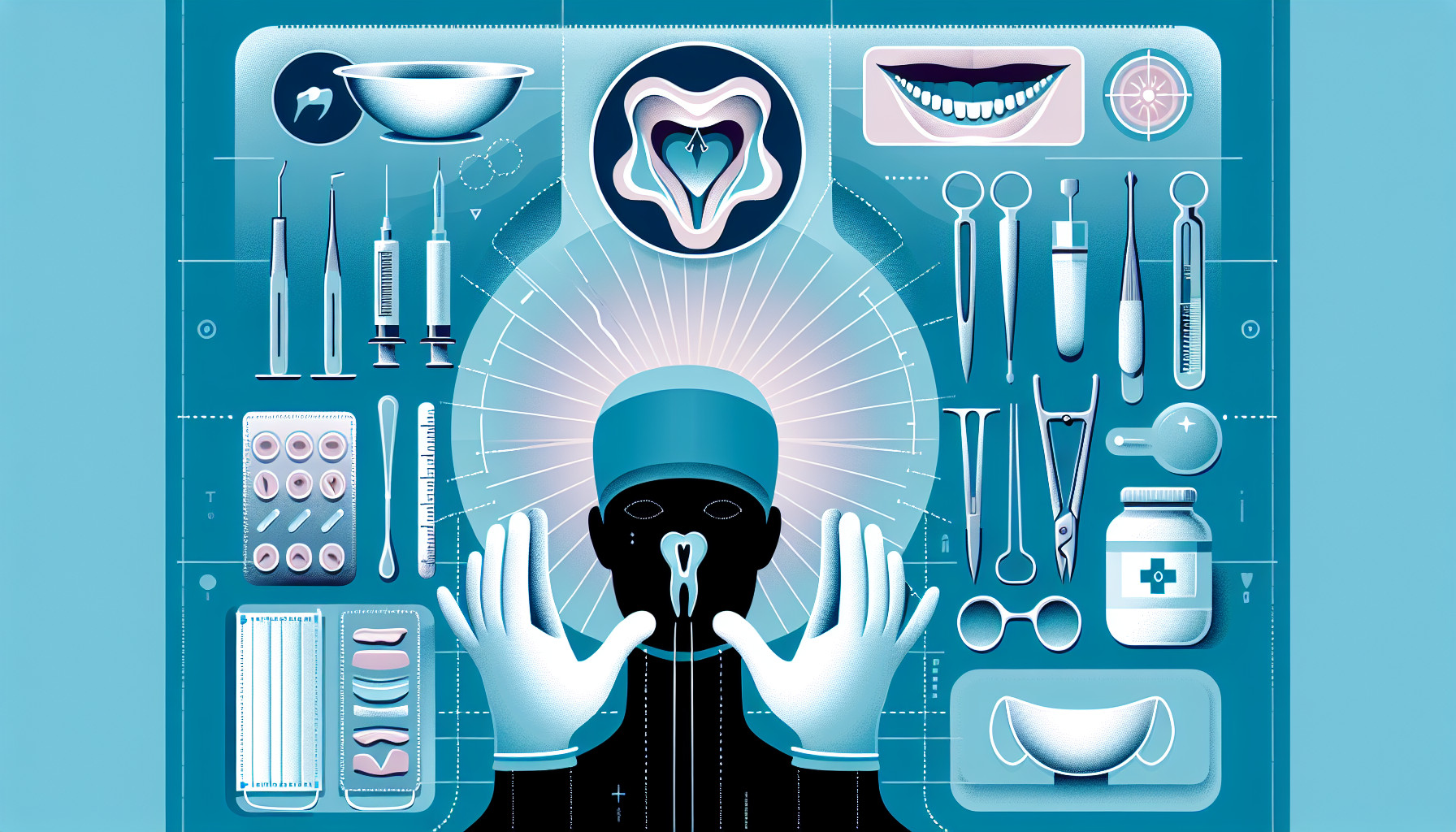Our Summary
This research paper examines the different types of wound dressings used in oral surgery and facial surgeries. It provides a detailed description of various wound dressings and their characteristics. The paper also presents the outcomes of using these dressings in different surgical procedures performed in the mouth.
FAQs
- What are the different types of wound dressings used in oral and facial surgeries?
- What are the characteristics of various wound dressings used in oral surgery?
- What are the outcomes of using different wound dressings in oral surgical procedures?
Doctor’s Tip
One helpful tip a doctor might tell a patient about oral surgery is to follow their post-operative care instructions carefully, including taking prescribed medications, avoiding certain foods, and keeping the surgical site clean to promote proper healing. It’s also important to attend all follow-up appointments to ensure the surgical site is healing correctly.
Suitable For
Patients who may be recommended for oral surgery include those with impacted teeth, severe tooth decay, gum disease, jaw misalignment, facial trauma, and oral cancers. Additionally, patients who require dental implants, bone grafts, or corrective jaw surgery may also benefit from oral surgery. Overall, oral surgery is recommended for patients who have complex dental issues that cannot be addressed with traditional dental procedures.
Timeline
Before oral surgery:
- Consultation: The patient meets with the oral surgeon to discuss the procedure, risks, and expectations.
- Pre-operative instructions: The patient receives instructions on fasting, medication adjustments, and other preparations for the surgery.
- Anesthesia: The patient is administered anesthesia to ensure they are comfortable and pain-free during the surgery.
During oral surgery:
- Incision: The oral surgeon makes an incision in the mouth to access the affected area.
- Procedure: The surgeon performs the necessary surgical procedure, which could involve tooth extraction, gum surgery, or jaw surgery.
- Wound closure: The surgeon closes the incision with sutures or other wound closure techniques.
After oral surgery:
- Recovery: The patient is monitored in the recovery room until they are awake and stable.
- Post-operative care: The patient receives instructions on caring for the surgical site, managing pain, and preventing infection.
- Follow-up appointments: The patient may need to return for follow-up appointments to ensure proper healing and address any concerns.
- Healing: The wound gradually heals over time, with any swelling or discomfort typically subsiding within a few days to weeks.
In conclusion, oral surgery is a common procedure that can help improve oral health and address various dental issues. Proper wound dressings and post-operative care are essential for successful outcomes and a smooth recovery process.
What to Ask Your Doctor
- What type of oral surgery procedure will I be undergoing?
- What are the potential risks and complications associated with this surgery?
- How long will the recovery process take and what can I expect during this time?
- What type of anesthesia will be used during the procedure and are there any potential side effects?
- Will I need to follow any specific post-operative care instructions?
- What type of wound dressing will be used after the surgery and how long will it need to stay in place?
- Are there any specific dietary restrictions I should follow after the surgery?
- How soon can I resume normal activities, such as eating and brushing my teeth, after the surgery?
- What signs or symptoms should I watch for that may indicate a complication or infection?
- How long will it take for the wound to heal completely and what can I do to promote healing?
Reference
Authors: Semkin VA, Kuzin AV, Gurin AN, Bezrukov AA. Journal: Stomatologiia (Mosk). 2016;95(4):87-90. doi: 10.17116/stomat201695487-90. PMID: 28635769
